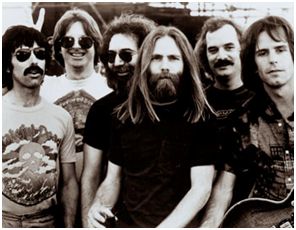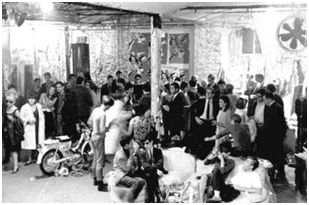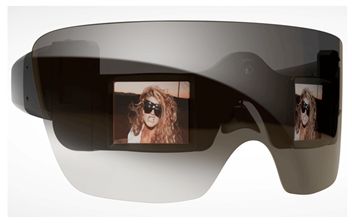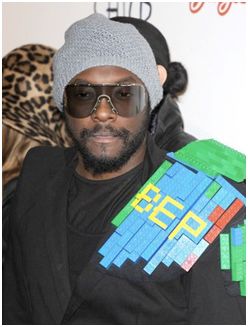![]()
You are welcome to share your thoughts on this article written by Greg Taylor, Director of Brand Provocation at Elmwood, London
These are dark, dark times. It seems right now that not a week goes by without some form of man-made or natural disaster hitting the headlines . . . from New Zealand to Japan to Libya: earthquakes, tsunamis, nuclear fallout and revolution. From London to Paris to Tokyo to Athens: crippling deficits, rising unemployment, increasing taxes and growing inflation.
Where is the light in our lives, the youthful optimism, the chutzpah? In the world of brand design who are the ‘superstars’ that will lead us out of this darkness, those with the balls and the wherewithal to show us another way? In short, where is today’s design movement and who’s leading it?
Where’s the next movement coming from?
Without cataloguing every design era we’ve had from the early 1900s to now, a quick overview might include the Arts and Craft Movement with the likes of William Morris, Frank Lloyd Wright, and Owen Jones at the helm. Then, the Bauhaus Movement with people like Herbert Bayer, Marcel Breuer, and Mies van der Rohe leading the way. If you fast forward, you’ll arrive at the New York School according to Milton Glaser, Paul Rand, and Raymond Loewy. Next came the punk-like New International Style of the Memphis Group led by Ettore Sottsass and finally the New Wave typified by Jamie Reid, Tibor Kalman and David Carson. But has anyone or anything really stepped up to the mark since the 90’s? Where now? Apple? Does the future belong to Jonny Ive?
Lone genius versus the crowd
Some would argue that in the 20th century we no longer have a need for the individual, the ‘special one’, the rock star designer to lead us out of the wilderness. Surely the 21st century instead belongs to the crowd, the social network and co-creators with their tweeting, and aggregated discount hunting and their inter-active technological creativity telling us what’s what and how things should be done. But is the crowd best placed to lead the way?
Provocatively doesn’t this lead us to the lowest common denominator, the compromise, the average? Is the amateur collective better than the brilliant individual? Are a million heads better than one? If we believe American manufacturer of office furniture and equipment Herman Miller then the crowd doesn’t always get it right. Having hired an expert designer to design a new office chair, the designer came up with a radically unique design that was extremely ergonomic as well as comfortable, but the reception for this chair by the ‘crowd’ was downright chilly. None of the test customers wanted to sit on it. How that chair became a best-selling, must-have $900 chair is another story, but the point is: the crowd could not have designed this radically different looking chair.
If we want radical, if we want rock and roll, then we probably need to look to the unusual or what Richard Florida describes in ‘The Rise of the Creative Class’ as the ‘un-standard people’. So if you’re looking for a new way to market your business, don’t look in the obvious places, like Harvard— look to someone like the Jerry Garcia, the legendary leader of the rock band The Grateful Dead.
Jerry and The Grateful Dead broke almost every rule in the music industry book in the 60s and 70s. They encouraged their fans to record shows and trade tapes; they built a mailing list and sold concert tickets directly to fans; and they made their money through live concerts, not album sales. By cultivating a dedicated, active community they created the Deadhead lifestyle. They gave away «freemium» content, and pioneered many of the social media marketing concepts we see today.
Likewise if you’re looking for a new way to do art and design then maybe your first port of call should be Andy Warhol’s Factory rather than Central St Martins.
The Factory was Warhol’s hip hangout for artsy types and famed for its groundbreaking parties. Warhol’s creative ethos was built around high volume production not limited one-offs which is why he used silk-screens so that he could mass-produce images the way capitalist corporations mass produce consumer goods – it wasn’t called The Factory for nothing! In order to continue working the way he did, he assembled a menagerie of adult film performers, drag queens, socialites, drug addicts, musicians, and freethinkers that became known as the Warhol Superstars, to help him. These ‘art-workers’ helped him create his paintings, starred in his films, and basically developed the atmosphere for which The Factory became legendary.
Rock stars of design
Looking to rock star individuals to inspire us everyday folk seems to be back in vogue. Polaroid, and more recently, Intel are two examples that suggest we don’t necessarily have to default to the masses for inspiration and leadership.
Polaroid has a long history in imaging with greater and lesser degrees of success so maybe it doesn’t come as a complete surprise that it turned to an ‘image’ superstar like Lady Gaga when it was looking for a fresh injection of creativity. Lady Gaga has been the creative director at Polaroid for around a year now, and, judging by its new line of products, the partnership definitely helped Polaroid establish a new creative direction for the company. This year Lady Gaga helped the company unveil a new line of products including the super-stylish GL20 Camera Glasses, which contain a camera, and 1.5-inch OLED screens that can capture and display images and video to people around you. As well as the GL10, they’ve recently released a mobile, wireless printer that can be used to print photos directly from your mobile phone.
«I consider myself to be a visionary, not just a songwriter and a singer. I am an artist,» said Lady Gaga. «I brought my vision and love of fashion, technology and obsession with the future into all of my work with Polaroid.» Spoken like a true rock and roll designer!
Similarly Intel have just signed up the Black Eyed Peas’ Will.i.am as a ‘director of creative innovation.’ The plan is to commence a long-term, ‘hands-on’ collaboration with Intel on its development of «new technologies, music and tech advocacy. Intel are thrilled to tap into the limitless creativity Will.i.am brings to the table. He’s not only a brilliant artist and producer, but also an innovator pushing the bounds of technology professionally and personally.
The future belongs to ‘T-shaped’ stars
Whilst it is romantic to think of the lone genius, the superstar rock and roller of design overcoming the mediocrity of the ‘many people’ — the future probably belongs to something in between. Perhaps to the people industrial designer Bill Moggridge calls ‘T-shape people’. T-shaped people have two kinds of characteristics, hence the use of the letter ‘T’ to describe them. The vertical stroke of the ‘T’ is a depth of ‘specialist’ skill that allows them to contribute to the creative process. The horizontal stroke of the “T” is their interest in collaboration. This is how the hybrid superstar creative blends both the right skills and the right attitude.
Perhaps then, the final words of this column should belong to Will.i.am, “Nearly everything I do involves processors and computers, and when I see an Intel chip I think of all the creative minds involved that help to amplify my own creativity. Teaming up with the scientists, researchers and computer programmers at Intel to collaborate and co-develop new ways to communicate, create, inform and entertain is going to be amazing.” Who would of thought it? The leader of the next design movement might just be a ‘T-shaped’ hip-hop artist who doubles up as a Lego-wearing transformer – now that’s rock and roll design!
About the Author
Greg Taylor became founding partner in global brand design consultancy Elmwood in 1989. Now Director of Brand Provocation, Greg is the creator and facilitator of Step Change™, Elmwood’s strategic tool for moving ideas forward. Clients include ASDA, Wal-Mart, Arla Foods, BBC, COI (Defra and DfT), Cable&Wireless, Comic Relief, Debbie & Andrew’s, Durex, Glasgow 2014 Commonwealth Games, McCain, and the Met Office.







